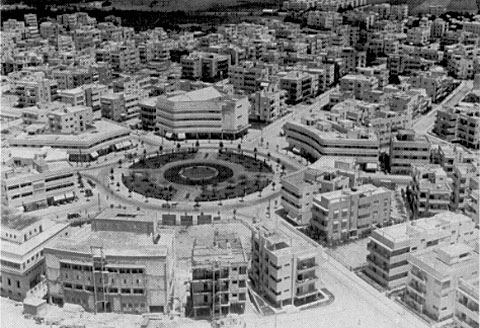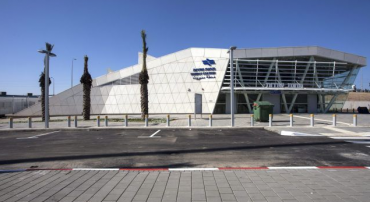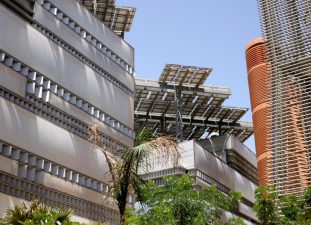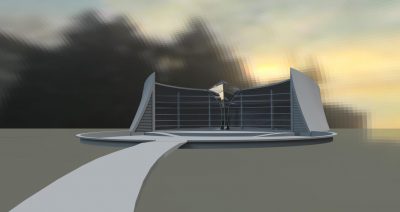 Central Tel Aviv, Cira 1940’s: A Sustainable Idea Then and Now
Central Tel Aviv, Cira 1940’s: A Sustainable Idea Then and Now
All over the Middle East, many old and often historical buildings are being torn down in order to “make way” for new, modern ones. This trend is especially true in cities like Cairo, Egypt and Tel Aviv, Israel, where the quaint and classical architecture of the “colonial period” (which also applies to India) is often forced to give way to glass faced skyscrapers which even though are claimed to be safer in the event of earthquakes and other natural disasters are less sustainable in regards to keeping them cool in summer or warm in winter.
This issue was expressed in an article in Treehugger where they reported that older styles of architecture, built before the “thermostat age” we live in now, had to be constructed to enable people to cope with the climate they lived in – particularly in regions where people experienced extreme changes in temperature during various times of the year.Many Middle Eastern countries have buildings constructed in a manner known as Islamic Art and Architecture, which involves using arches, thick walls and small windows to keep out the sun’s heat in summer, and warm the occupants during the colder winter months.
Although Islamic architecture also incorporates earlier Romanesque and Byzantine styles, the main purpose was durability and protection against the elements as well as beauty to the beholder. We’ve talked about countries such as Saudi Arabia are now incorporating the sustainability of Islamic architecture into newer structures such as the recently competed KAUST University in which the buildings themselves have been constructed in order to screen out a good deal of the heat that is generated by the hot Arabian sun; making the internal environment more sustainable for the students.
But the main idea in preserving older buildings is simply to use them and not tear them down for the purpose of constructing a new, less sustainable one.
An example of efforts being made to preserve older styles of architecture can be seen today in Tel Aviv, Israel, where parts of the inner “core” city are being preserved and designated as historical areas. Tel Aviv is one of the few cities in the world where the architectural ideas of Sir Patrick Geddes are being designed as World Heritage sites by the UN organization UNESCO.
Geddes’ unique “White Building” architectural styling was used in construction of buildings in Tel Aviv during the period from 1930 to 1948, and utilized the principles of large balconies, thick walls with small windows, and white paint to reflect the sun’s heat.
During Tel Aviv’s 100th anniversary celebration last year, a lot of mention was made about the city’s unique “White City Architecture” and efforts being made to preserve it.
Mention was also made, however, of the construction of many new high rise buildings, many of 40 stories or more, that have been built recently, often at the expense of older, perhaps more sustainable buildings.
While the new, glass exterior skyscrapers certainly look nice, they require a lot of energy to heat and cool them that in the long run is counter-productive to the environment. We might all take a lesson from people such as Geddes, and make more efforts to preserve and restore the older buildings, instead of replacing them with news ones. This idea is especially relevant from an environmental point of view. And to quote what was written in the above Treehugger article: The greenest brick is the one that is already in the wall.
Articles about sustainable Middle Eastern architecture:
Tel Aviv’s 100th: Sustainability and Beyond
Saudi Arabia’s KAUST University Designed as a Model of Environmental Sustainability
Hassan Fathy: the Middle East Father of Sustainable Architecture




I’m not an expert, but wasn’t Patrick Geddes more concerned with the design and planning of the city as a whole, rather than the architecture of the buildings? Doesn’t the distinct White City style owe more to Bauhaus and the International Style? Not finding fault, just really interested…